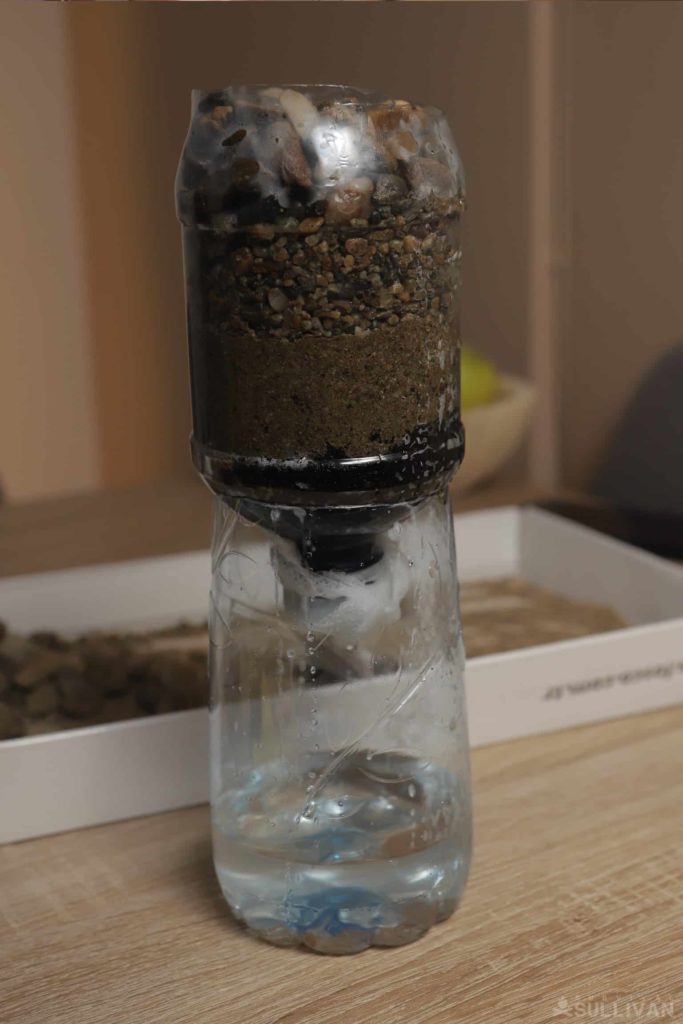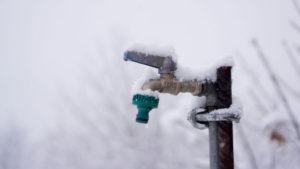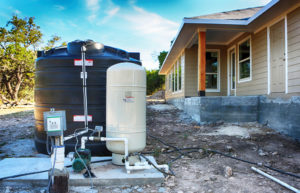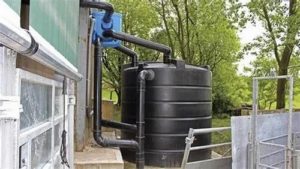If you’re looking to provide clean drinking water for your homestead without breaking the bank, consider building a gravel filter.
This simple yet effective solution can purify your water using only basic materials that are easy to source and affordable.
With some careful planning and a bit of elbow grease, you can create a robust filtration system that will remove impurities and contaminants from your water supply, giving you peace of mind and the assurance that your family is drinking safe, healthy water.
We’ll walk you through the steps to build a gravel filter for your homestead, including tips on how to choose the right materials, design the system, and maintain it over time.
Whether you live in a rural area or simply want to take control of your family’s water needs, building a gravel filter is a cost-effective and empowering solution that can provide long-lasting benefits for your health, wallet, and sustainability.
Understand your water needs
Before you start building a gravel filter, it’s important to understand your water needs and the volume of water you need to filter. This will help you determine the size of your filter and the type of media you’ll need to use.
The volume of water you need to filter will determine the size of your filter and the type of media you’ll need to use.
Consider the number of people in your household, your water usage habits, and any specific water requirements you may have, such as irrigation needs or fish tank maintenance.
Consider the frequency of water usage and the amount of time you need to store the filtered water.
To determine your water needs, you can start by calculating your daily water usage.
This can be done by checking your water meter before and after a specific period of time, such as a day or a week.
You can also estimate your water usage based on the number of people in your household and the size of your home.
For example, a family of four may use around 400 gallons of water per day, while a single person may use around 200 gallons per day.
Once you have determined your daily water usage, you can use this information to select the appropriate size of your gravel filter.
A larger filter will be needed to accommodate more water volume, and the type of media you’ll need will depend on the size of your filter.
For example, if you need to filter 400 gallons of water per day, you may need to use a larger filter with more media to ensure efficient filtration.
By calculating your daily water usage and considering your specific water requirements, you can determine the appropriate size of your filter and the type of media you’ll need to use for efficient and effective filtration.
Choose the right media
Gravel is a popular choice for homestead water filters because it’s affordable and effective. However, you may also consider using sand, charcoal, or other media depending on your specific needs.
When it comes to choosing the right media for your homestead water filter, there are several options to consider.
Gravel is a popular choice due to its affordability and effectiveness, but it may not be the best choice for every situation.
Sand, charcoal, and other media can also be effective options, depending on your specific needs and the type of contaminants you need to remove from your water.
Sand is a good choice for removing suspended particles and sediment from your water, while charcoal is effective at removing chlorine and other chemicals.
Other media, such as carbon block filters, can also be used to remove a wide range of contaminants, including bacteria, viruses, and lead.
Ultimately, the right media for your homestead water filter will depend on your specific needs and the level of contamination in your water.
By considering the different options and consulting with a water filtration expert, you can choose the best media for your situation and ensure that your water is safe to drink.
Select the appropriate gravel size
Different gravel sizes have different filtration capabilities. Choose a gravel size that’s appropriate for your water needs. For example, coarse gravel may be best for removing large particles and sediment, while finer gravel may be better for removing smaller impurities.
When selecting the appropriate gravel size for your water filtration system, it’s important to consider the specific filtration capabilities of different gravel sizes.
Coarse gravel, with larger particles and more open space between them, is better suited for removing large particles and sediment from the water.
This type of gravel can help to prevent clogging and ensure that the water is free of large debris.
On the other hand, finer gravel, with smaller particles and less open space, is better suited for removing smaller impurities from the water.
This type of gravel can help to remove dissolved solids and other impurities that may be present in the water.
By selecting the appropriate gravel size based on your water needs, you can ensure that your filtration system is effective and efficient in removing impurities and providing clean, safe drinking water.
Use a geotextile filter bag
A geotextile filter bag can help to prevent the gravel from washing away and improve the filter’s effectiveness. These bags are made of a durable fabric that allows water to pass through while keeping the gravel in place.
Using a geotextile filter bag can significantly improve the effectiveness of your gravel filter by preventing the gravel from washing away.
Unlike traditional filter bags made of plastic or burlap, geotextile filter bags are made of a durable, woven fabric that allows water to pass through while keeping the gravel in place.
This design helps to prevent the gravel from being washed away by water flowing through the filter, which can clog the filter and reduce its effectiveness.
The geotextile fabric is more resistant to tears and punctures than traditional materials, making it a longer-lasting and more reliable option for your filter.
By using a geotextile filter bag, you can ensure that your gravel filter remains effective and maintains its performance over time.
Add a pre-filter
If you have a high volume of water to filter, consider adding a pre-filter to your system. This can help to remove larger particles and sediment before they reach the gravel filter, extending the life of your filter.
If you have a high volume of water to filter, consider adding a pre-filter to your system.
This extra step can help to remove larger particles and sediment before they reach the gravel filter, extending the life of your filter.
By catching these larger particles upfront, you can reduce the amount of wear and tear on your gravel filter, allowing it to work more efficiently and last longer.
Pre-filters can be made from a variety of materials, such as polyester, nylon, or pleated paper, and can be designed to target specific contaminants like dust, sediment, or chlorine.
In addition, pre-filters are often washable and reusable, making them a cost-effective and environmentally friendly option.
By adding a pre-filter to your water filtration system, you can improve the overall efficiency and lifespan of your system, and enjoy cleaner, healthier drinking water.
Use a loose media bed
Unlike a traditional water filter, which uses a packed media bed, a gravel filter uses a loose media bed. This allows the water to flow through the media more easily and improves the filter’s effectiveness.
One key difference between a traditional water filter and a gravel filter is the type of media bed used.
A traditional water filter employs a packed media bed, where the media is tightly packed together to maximize surface area and contact with the water.
In contrast, a gravel filter uses a loose media bed, where the media is allowed to flow freely and move within the filter.
This loose media bed design improves the effectiveness of the filter in several ways.
It allows the water to flow through the media more easily, which enhances the filter’s ability to remove impurities and contaminants.
The loose media bed allows for better distribution of water across the filter, ensuring that all areas of the media are exposed to the water and able to effectively remove impurities.
This results in a more efficient and effective filtration process, making gravel filters an ideal choice for a wide range of water filtration applications.
Add a distribution tank
A distribution tank can help to ensure that the water is evenly distributed across the gravel filter, improving its effectiveness. This can be as simple as a plastic tank or container with holes drilled in the bottom.
A distribution tank can be a game-changer for your gravel filter, as it helps to ensure that the water is evenly distributed across the filter, maximizing its effectiveness.
This simple addition can be as basic as a plastic tank or container with holes drilled in the bottom.
The holes allow the water to seep through the tank and into the gravel filter, ensuring that all areas of the filter are receiving the appropriate amount of water.
By evenly distributing the water, you can prevent over-saturation of the filter, which can lead to a buildup of bacteria and other contaminants.
A distribution tank can help to prevent under-saturation, which can result in inadequate filtering and waste of water.
With a distribution tank in place, you can rest assured that your gravel filter is working at its best, providing you with cleaner and healthier water for your plants.
Maintain your filter regularly
Just like any other filter, your gravel filter will need regular maintenance to ensure it continues to function effectively. This may include cleaning the filter and replacing the gravel as needed.
Regular maintenance is important to keep your gravel filter in top condition and ensuring effective water filtration.
The filter should be cleaned and the gravel replaced periodically to prevent clogging and maintain optimum performance.
Cleaning the filter can be done by backwashing it with water, which helps to remove any dirt and debris that may have accumulated.
The gravel should be replaced every 6-12 months, depending on the amount of use and the quality of the water being filtered.
Replacing the gravel ensures that the filter has a fresh, unclogged surface area for filtration, which can improve the taste, odor, and clarity of your water.
Failure to maintain your gravel filter regularly can lead to decreased water quality, which can be detrimental to your health and the health of your plants.
By prioritizing regular maintenance, you can ensure that your gravel filter continues to provide clean, safe drinking water for you and your loved ones.
Want More? Dive Deeper Here!
Hey there! If you’re the type who loves going down the rabbit hole of information (like we do), you’re in the right spot. We’ve pulled together some cool reads and resources that dive a bit deeper into the stuff we chat about on our site. Whether you’re just killing time or super into the topic, these picks might just be what you’re looking for. Happy reading!






